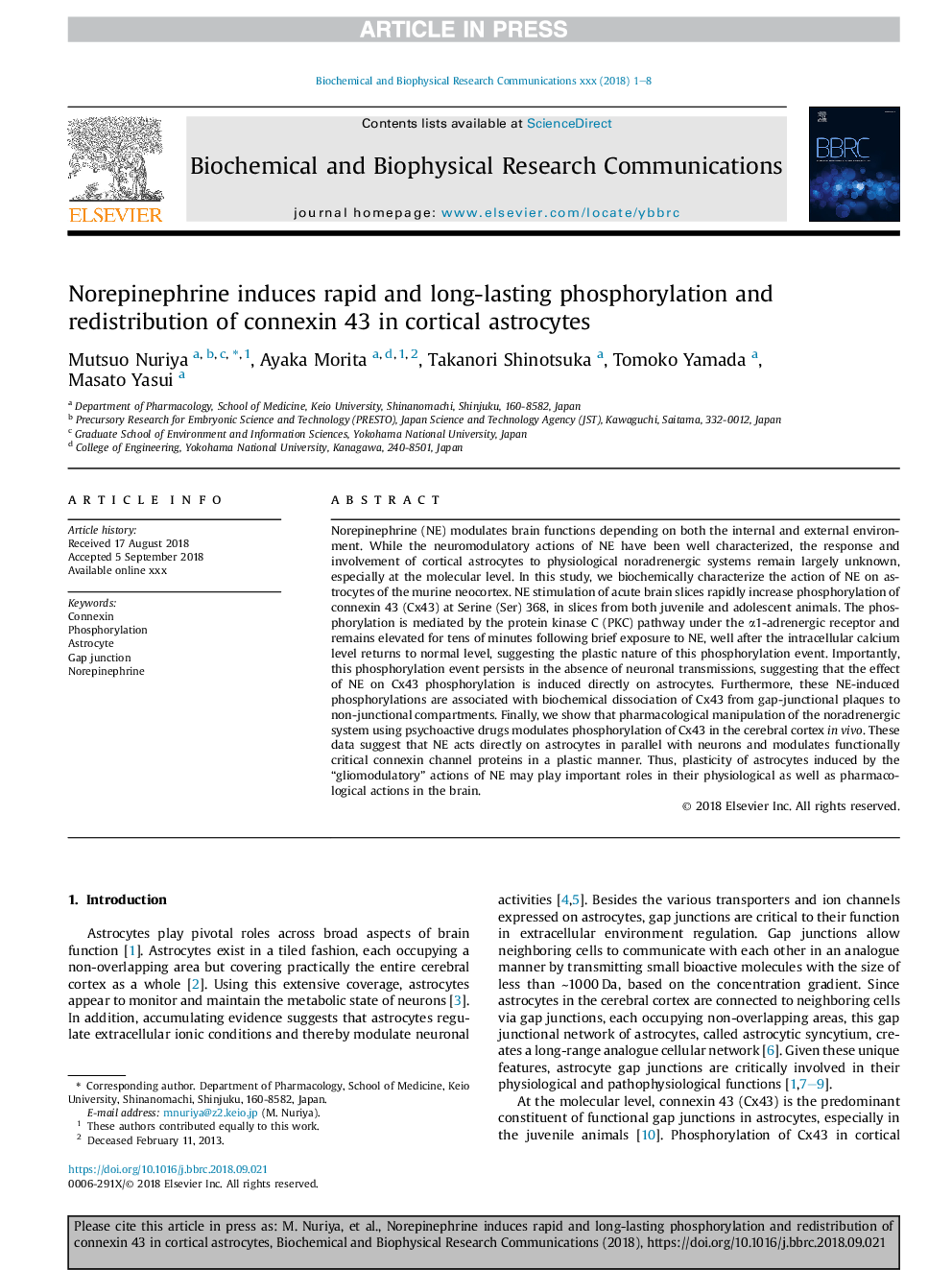| Article ID | Journal | Published Year | Pages | File Type |
|---|---|---|---|---|
| 11015557 | Biochemical and Biophysical Research Communications | 2018 | 8 Pages |
Abstract
Norepinephrine (NE) modulates brain functions depending on both the internal and external environment. While the neuromodulatory actions of NE have been well characterized, the response and involvement of cortical astrocytes to physiological noradrenergic systems remain largely unknown, especially at the molecular level. In this study, we biochemically characterize the action of NE on astrocytes of the murine neocortex. NE stimulation of acute brain slices rapidly increase phosphorylation of connexin 43 (Cx43) at Serine (Ser) 368, in slices from both juvenile and adolescent animals. The phosphorylation is mediated by the protein kinase C (PKC) pathway under the α1-adrenergic receptor and remains elevated for tens of minutes following brief exposure to NE, well after the intracellular calcium level returns to normal level, suggesting the plastic nature of this phosphorylation event. Importantly, this phosphorylation event persists in the absence of neuronal transmissions, suggesting that the effect of NE on Cx43 phosphorylation is induced directly on astrocytes. Furthermore, these NE-induced phosphorylations are associated with biochemical dissociation of Cx43 from gap-junctional plaques to non-junctional compartments. Finally, we show that pharmacological manipulation of the noradrenergic system using psychoactive drugs modulates phosphorylation of Cx43 in the cerebral cortex in vivo. These data suggest that NE acts directly on astrocytes in parallel with neurons and modulates functionally critical connexin channel proteins in a plastic manner. Thus, plasticity of astrocytes induced by the “gliomodulatory” actions of NE may play important roles in their physiological as well as pharmacological actions in the brain.
Related Topics
Life Sciences
Biochemistry, Genetics and Molecular Biology
Biochemistry
Authors
Mutsuo Nuriya, Ayaka Morita, Takanori Shinotsuka, Tomoko Yamada, Masato Yasui,
